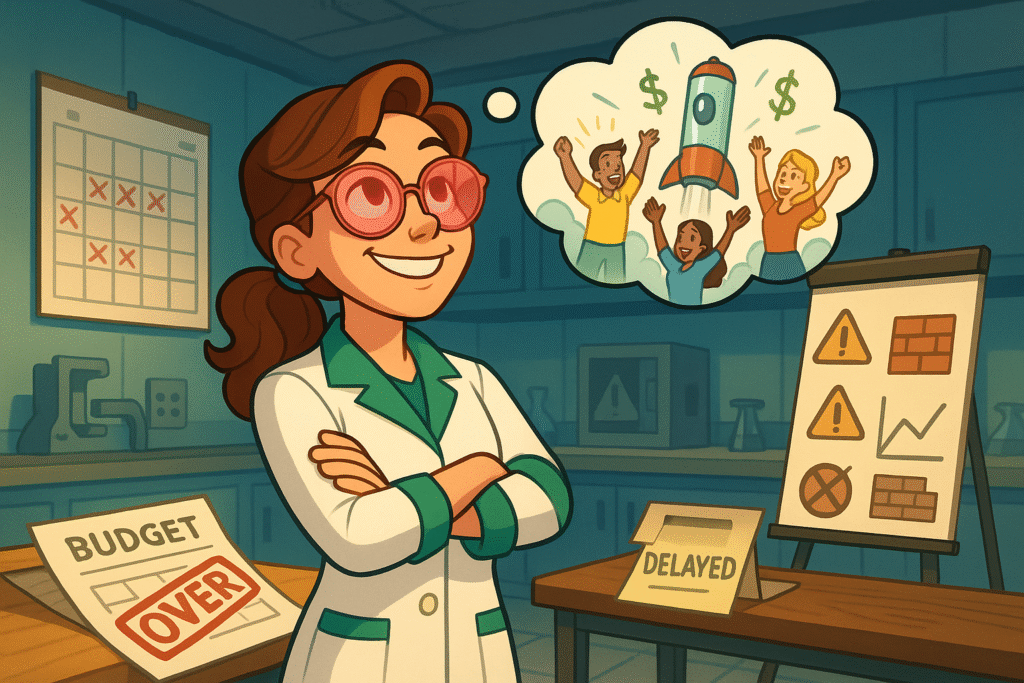
Innovators and inventors are exceptionally optimistic by nature.
They have to be. You can’t dream up world-changing products without believing impossible things can become inevitable. That relentless optimism fuels the persistence required to turn wild ideas into reality.
But those same rose-colored glasses often become their Achilles heel.
Optimism bias — the tendency to overestimate positive outcomes and underestimate risks—plagues product development at every stage.
Inventors consistently believe their timeline estimates, budget projections, and market reception predictions despite overwhelming evidence that first attempts rarely go according to plan.
“This will take three months,” becomes six.
“We need $50k to launch,” becomes $150k.
“Customers will obviously see the value,” becomes months of explaining why people should care about features they didn’t know they needed.
The psychological mechanism is well-documented:
We focus on our intended outcomes while systematically underweighting the obstacles that typically derail those outcomes.
We remember the success stories while forgetting the failures.
We imagine ideal scenarios while discounting Murphy’s Law.
This creates a dangerous paradox. The optimism required to start innovative projects becomes the blindness that prevents realistic planning for those same projects.
The most successful innovators aren’t the most optimistic—they’re the ones who’ve learned to harness optimism for vision while engaging realism for execution.
In I Need That, I explore how products succeed when visionary thinking meets operational honesty. The companies that consistently deliver breakthrough innovations are NOT endlessly positive. They tend to be selectively optimistic about outcomes and systematically pessimistic about timelines, budgets, and market assumptions.
Product Payoff: Think of how SpaceX‘s notoriously complex but undoubtedly brilliant founder Elon Musk exemplifies productive optimism bias management. While maintaining audacious long-term visions (Mars colonization, sustainable transportation), SpaceX systematically over-engineers for failure scenarios. Their approach assumes multiple setbacks, budget overruns, and technical challenges while maintaining confidence in eventual success. It’s a combination of visionary optimism with operational pessimism that has enabled breakthrough achievements pure optimism or a normal amount of pessimism NEVER could have delivered.
Action for today: Identify where optimism bias might be affecting your own current projects. Take your timeline estimates and add 50%. Take your budget projections and double them. Take your market response assumptions and cut them in half.
This is NOT pessimism. It is creating realistic buffers that allow optimistic visions to survive inevitable setbacks without derailing the entire endeavor.
Your optimism got you started.
Realistic planning will get you finished.
How has optimism bias most affected YOUR product development experience?
Tap that reply arrow and share how you’ve learned to balance visionary thinking with practical execution.
Or reach out to my team of product go-to-market specialists at Graphos Product.
